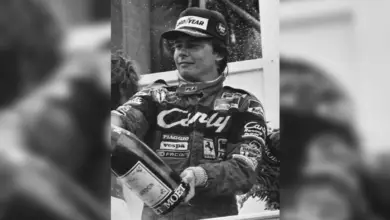Mercedes W14 Shows Promising Speed Boost in Austin: Wolff’s Optimistic Outlook
Mercedes Team Principal Toto Wolff’s latest report on the W14’s performance in Austin reveals significant upgrades, making the car faster yet challenging to handle. The recent changes, as part of the team’s continuous development, mark a notable step forward in Mercedes’ F1 campaign.
Key Takeaways:
- Major Upgrades Impact Performance: Mercedes introduced two significant upgrades this year, first in Monaco with a B-spec car and later in Austin with a new floor for the W14. These changes are part of Mercedes’ strategy to rectify early season mistakes and lay the groundwork for the 2024 car.
- Mixed Results Post-Upgrades: The Austin upgrade showed its potential in Mexico, with Lewis Hamilton achieving P2 in the United States Grand Prix. However, his disqualification due to excessive skid block wear somewhat overshadowed this performance.
- Wolff’s Cautious Optimism for Brazil: Despite the advancements, Wolff remains cautiously optimistic about the upcoming Brazilian Grand Prix. He stresses the importance of data correlation and tuning the car based on the upgrades to ensure a strong performance.

In the dynamic world of Formula 1, continuous development and adaptation are key to staying competitive. Mercedes, under the guidance of Team Principal Toto Wolff, has been working tirelessly to improve their W14 car. The team’s efforts were evident in the latest upgrades introduced in Austin for the United States Grand Prix. Lewis Hamilton, Mercedes’ star driver, acknowledged the increased speed of the car but also noted its increased difficulty to drive.
The journey of the W14 this season has been one of evolution and learning. The team’s first major upgrade was introduced in Monaco with a B-spec car designed to correct early season errors. The second significant update in Austin, featuring a new floor, was not just about immediate performance gains but also about gathering insights for the 2024 car design.
While the upgrades in Monaco revealed their effectiveness in Spain, the Austin upgrade demonstrated its potential in Mexico. Hamilton’s P2 finish in the United States Grand Prix was a testament to the car’s improved pace, although his later disqualification due to excessive skid block wear put a damper on the achievement.
Wolff’s words post-upgrade were a mix of satisfaction and realism. He acknowledged the increase in downforce and drivability, yet he was quick to point out the inherent challenges of the car. “She’s still so difficult to drive, although she’s faster,” Hamilton told Wolff, highlighting the ongoing battle to tame the W14’s quirks.
Looking ahead to the Brazilian Grand Prix, Wolff expressed a balanced view. While optimistic about the car’s capabilities, he was careful not to set expectations too high, drawing lessons from the previous year’s surprise performance. His focus on data correlation and tuning the car to maximize the benefits of the upgrades is a clear indication of Mercedes’ methodical approach to the remainder of the season.
In conclusion, the journey of the Mercedes W14 this season is a narrative of resilience, innovation, and strategic foresight. With Wolff at the helm and Hamilton’s skill behind the wheel, Mercedes continues to navigate the complexities of F1 racing, always looking for that extra edge to stay ahead in the relentless pursuit of victory.


